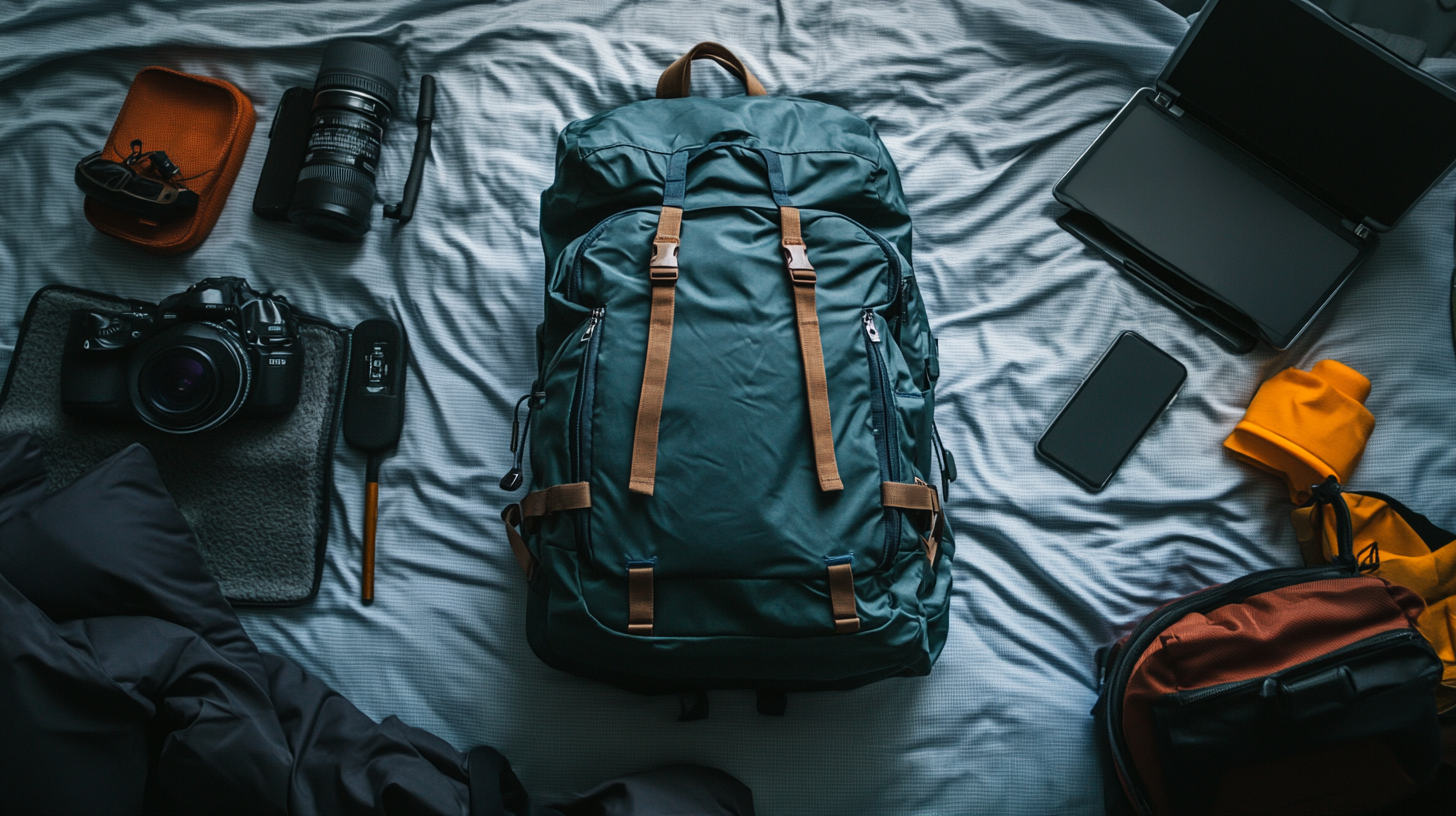
The Art of Packing Light for Holiday Trips
Kicking off a holiday adventure is one of life’s greatest joys, offering opportunities to explore new places, immerse yourself in different cultures, and create lasting memories. However, the excitement can often be overshadowed by the stress of packing. Overpacking not only leads to unnecessary stress but can also result in extra costs, logistical headaches, and the burden of hauling heavy luggage. Mastering the art of packing light is a skill that streamlines your journey, enhances your travel experience, and allows you to focus on what truly matters. In this comprehensive guide, we’ll delve into effective strategies and practical tips to help you pack efficiently without sacrificing essentials, ensuring a hassle-free and enjoyable holiday adventure.
Why Packing Light Matters

Traveling light isn’t just about the convenience of carrying less; it’s a strategic approach that can significantly impact every aspect of your trip. Airlines misplace approximately 7 out of every 1,000 bags, leading to unnecessary delays and frustration. By opting for carry-on luggage only, as suggested in The Ultimate Guide to Carry-On Travel for Stress-Free Holidays, you eliminate the risk of lost baggage and save precious time at the airport. Packing light reduces stress associated with keeping track of multiple bags, minimizes baggage fees, and enhances your mobility during your journey.
Beyond logistical benefits, packing light encourages a more immersive travel experience. With fewer belongings to manage, you can navigate crowded airports, hop on and off public transportation, and explore bustling streets with ease. This freedom allows you to focus on immersing yourself in new destinations and embracing spontaneous adventures without being weighed down by heavy luggage. As highlighted in Experience More with Less: How Minimalist Packing Enhances Travel, traveling light opens doors to opportunities you might otherwise miss.
Environmental considerations also play a significant role. Lighter luggage contributes to reduced fuel consumption on flights and other modes of transportation, making your travels more eco-friendly. According to Sustainable Travel: The Environmental Impact of Packing Light, every kilogram of weight saved can make a difference in carbon emissions. Additionally, avoiding the physical strain of heavy bags can prevent injuries and promote overall well-being during your trip, allowing you to stay energized and ready for adventure.
In essence, packing light is a conscious choice that enhances the enjoyment of your holiday travel while offering practical, environmental, and health benefits. It’s about smart planning and embracing a minimalist mindset to make the most of your journey.
Embracing the Minimalist Mindset

Packing light begins with a fundamental shift in perspective from “more is better” to “less is more.” Adopting a minimalist mindset means prioritizing experiences over possessions and recognizing that you don’t need an extensive array of items to enjoy your trip. It’s about intentional packing and being mindful of what truly adds value to your travel experience. For insights on cultivating this mindset, refer to Minimalist Travel: Prioritizing Experiences Over Possessions.
Renowned traveler James Eagleman emphasizes embracing the “adventure mindset.” He suggests that understanding the benefits and trade-offs of traveling light can lead to greater freedom and less stress. By focusing on the essentials and letting go of “just in case” items, you open yourself up to spontaneity and new opportunities during your holiday. Eagleman’s philosophy is detailed in James Eagleman’s Guide to Stress-Free Minimalist Travel.
Similarly, Marek’s guide to minimalist packing advocates carrying only what you need to save time and money while enhancing mobility. His approach encourages creating personalized packing lists tailored to your specific trip, ensuring that each item serves a purpose. Avoiding last-minute panic packing helps maintain a clear headspace and reduces the likelihood of overpacking. Explore his strategies in Customized Minimalist Packing Lists for Efficient Travel.
Ultimately, embracing minimalism in packing is about cultivating a mindset that values simplicity and practicality. It’s a transformative shift that not only lightens your physical load but also enriches your overall travel experience by allowing you to focus on the journey itself.
Strategic Planning: The Foundation of Efficient Packing

Effective packing starts long before you open your suitcase. Strategic planning involves carefully considering your itinerary, activities, and the climate of your destination. Begin by listing the specific events and scenarios you’ll encounter during your trip, as outlined in Trip Itinerary Planning for Efficient Packing. This targeted approach ensures you bring appropriate clothing and gear without excess.
One popular technique is applying the “6-5-4-3-2-1” rule for clothing: six underwear, five pairs of socks, four tops, three bottoms, two pairs of shoes, and one hat. Adjust these numbers based on the length of your trip and personal needs. This method provides a structured framework to prevent overpacking while covering your essentials. Learn more about this strategy in The 6-5-4-3-2-1 Packing Method Explained.
Another effective strategy is creating a capsule wardrobe. Choose versatile pieces that can be mixed and matched to create multiple outfits. Sticking to a neutral color palette enhances interchangeability, allowing you to dress appropriately for various occasions without the need for excessive clothing. For tips on building a travel capsule wardrobe, check out Creating a Versatile Capsule Wardrobe for Travel.
Planning also involves researching the weather forecast and cultural norms of your destination. This knowledge helps you pack suitable attire and avoid bringing unnecessary items. By anticipating your needs and focusing on essentials, you streamline your packing process and reduce the likelihood of forgetting important items. Utilize resources like Destination-Specific Packing Guides and Weather Resources to aid in your preparation.
Choosing the Right Luggage

Your choice of luggage plays a critical role in how effectively you can pack light. Opting for a smaller, lightweight suitcase or backpack inherently limits the amount of space available, encouraging you to prioritize essentials. Travel experts recommend bags like the Osprey Farpoint 40, CabinZero backpacks, or the Nomatic 40L Travel Bag, known for their durability and optimal size for carry-on regulations. For a comparison of top options, visit Best Lightweight Carry-On Luggage for Minimalist Travelers.
Smaller bags not only prevent overpacking but also enhance mobility. Navigating airports, train stations, and city streets becomes significantly easier when you’re not burdened by oversized luggage. Additionally, carry-on-sized bags eliminate the need to check luggage, saving time during check-in and upon arrival at your destination. Learn about the advantages in Benefits of Traveling with Only a Carry-On Bag.
Consider the functionality of your luggage as well. Features like multiple compartments, easy-access pockets, and comfortable straps or handles can make organizing and transporting your belongings more convenient. Investing in quality luggage designed for efficient packing can greatly improve your travel experience. Explore functional luggage features in Key Luggage Features for Efficient Packing and Travel Comfort.
Remember, the goal is to select luggage that supports your packing strategy and aligns with airline regulations, allowing you to focus on the journey ahead rather than the logistics of your belongings.
Smart Clothing Strategies for Minimalist Travel

Clothing often occupies the most space in luggage, making it a key focus area for packing light. Begin by selecting versatile clothing items that can serve multiple purposes and be worn in different settings. For instance, Merino wool garments are excellent for travel—they’re breathable, resist odors, and can be worn multiple times between washes. Discover more in Benefits of Merino Wool Clothing for Travelers.
Implement the rule of three for clothing: bring three tops and three bottoms that can be mixed and matched to create various outfits. This strategy maximizes wardrobe options while minimizing the number of items packed. Choosing lightweight, wrinkle-resistant fabrics further enhances efficiency. For guidance, see Mix-and-Match Strategies for a Minimalist Travel Wardrobe.
Limiting footwear is another crucial aspect. Shoes are typically bulky and heavy, so aim to bring no more than two pairs—one comfortable pair for daytime activities and one suitable for evenings or special occasions. Wear your bulkiest shoes during travel to save space in your luggage. Tips on selecting versatile footwear can be found in Choosing the Perfect Travel Shoes for Comfort and Style.
Accessorize strategically to vary your outfits without adding significant weight. Items like scarves, hats, or jewelry can transform a look with minimal impact on your luggage space. By thoughtfully selecting clothing and accessories, you maintain style and comfort while adhering to minimalist packing principles. For ideas, refer to Lightweight Accessories to Enhance Your Travel Wardrobe.
Maximizing Space with Packing Cubes and Compression

Packing cubes are invaluable tools for organizing and compressing your clothing. They compartmentalize your items, making it easier to locate what you need without unpacking your entire bag. Additionally, compression packing cubes can significantly reduce the volume of your clothes, allowing you to fit more into less space. Learn how to use them effectively in Mastering Packing Cubes for Efficient Travel Organization.
Rolling your clothes is another effective technique for saving space and reducing wrinkles. This method works well with packing cubes, providing an efficient way to pack and access your garments. Combining rolling with compression ensures you make the most of the available space in your luggage. For a step-by-step guide, see How to Roll and Compress Clothes for Maximum Packing Efficiency.
Hand-roll vacuum bags are also an option for compressing bulkier items like jackets or sweaters. These bags remove excess air, shrinking the size of your clothes without the need for a vacuum. This can be particularly useful when packing for cold-weather destinations where thicker clothing is necessary. Discover the best options in Top Compression Bags for Travelers and How to Use Them.
Efficient packing isn’t just about fitting everything into your bag; it’s about organizing your belongings in a way that enhances accessibility and maintains the condition of your items throughout your travels.
Streamlining Toiletries and Electronics

Toiletries and electronics can quickly add weight and take up valuable space. Opt for travel-sized toiletries or transfer your essentials into small, reusable containers. Remember that many accommodations provide basic amenities, and purchasing items at your destination is often an option. For eco-friendly options, check out Sustainable Travel Toiletries: Minimizing Waste and Space.
When it comes to electronics, consider consolidating devices. A smartphone can serve multiple functions—as a camera, GPS, e-reader, and more—reducing the need to carry separate gadgets. Evaluate what is truly necessary for your trip and leave behind items that aren’t essential. For tips on minimizing electronics, visit Essential Travel Electronics and How to Downsize.
Keep your liquids and electronics accessible by packing them in an easily reachable compartment or packing cube. This approach streamlines the security screening process at airports, saving time and reducing hassle. For more on security-friendly packing, see Packing for Smooth Airport Security Checks.
By minimizing your toiletries and electronics to the essentials, you lighten your load and simplify your packing process, adhering to the principles of traveling light.
On-the-Go Strategies for Maintaining Light Travel

Packing light doesn’t end once you’ve left home; maintaining a minimalist approach during your trip is equally important. Plan to do laundry on the road, either by utilizing hotel services, local laundromats, or quick washes in your accommodation. This allows you to re-wear clothing without bringing excessive amounts. For tips on laundering while traveling, consult Guide to Doing Laundry on the Road.
Renting gear at your destination is a practical option for specialized activities. Rather than packing bulky equipment for hiking, skiing, or other adventures, consider renting what you need upon arrival. This not only saves space but also ensures you have appropriate gear suited to local conditions. Find rental options in How to Rent Travel Gear at Your Destination.
Purchasing consumables like sunscreen, toiletries, or snacks at your destination can reduce the initial weight of your luggage. Local products may also enhance your travel experience by allowing you to try new items and support the local economy. For insights, read Benefits of Buying Local Products When Traveling.
Staying flexible and open to adapting your plans based on what’s available at your destination reinforces the minimalist travel mindset and contributes to a more enjoyable journey.
Expert Insights and Real-World Examples

Learning from experienced travelers provides valuable insights into effective packing strategies. Travel writer Jamie Edwards emphasizes the convenience of packing light in cold weather by using durable packing cubes to compress bulky winter clothing. Her approach includes the “5-4-3-2-1” packing method: five tops, four bottoms, three pairs of shoes, two dresses or handbags, and one accessory. Explore her techniques in Jamie’s Cold Weather Packing Tips for Minimalists.
Influential traveler Rick Steves advocates for bringing very little and justifying the inclusion of each item. His minimalist philosophy focuses on ease of travel and the ability to collect souvenirs without the burden of overpacking. Steves’ advice highlights the importance of a test run with your luggage to ensure comfort and practicality. Learn more in Rick Steves’ Philosophy on Packing Light.
Marek’s minimalist packing guide underscores the benefits of carrying essentials only, such as time and cost savings and enhanced mobility. His recommendations include using smaller, lightweight luggage to prevent overpacking and creating personalized packing lists to avoid unnecessary items. Dive into his guide at Marek’s Ultimate Minimalist Packing Guide.
These experts’ experiences demonstrate that packing light is achievable and advantageous, reinforcing the strategies discussed and inspiring confidence in adopting a minimalist approach to holiday travel.
The Environmental and Health Benefits of Packing Light

Packing light extends beyond personal convenience; it has positive implications for the environment and your health. Reducing the weight of your luggage contributes to lower fuel consumption in transportation, decreasing your carbon footprint. Lighter planes consume less fuel, and the same principle applies to other modes of transport like buses and trains. For more details, read How Light Packing Reduces Your Carbon Footprint.
From a health perspective, carrying lighter luggage reduces the risk of physical strain and injuries associated with heavy lifting. This is particularly important during travel when you’re navigating unfamiliar environments and potentially uneven terrains. Preventing injuries allows you to enjoy your trip fully. For health tips, see Avoiding Travel Injuries Through Light Packing.
Additionally, a lighter load can lead to better posture and less fatigue, allowing you to enjoy your trip without the distraction of physical discomfort. By considering the environmental and health benefits, packing light becomes a holistic approach to responsible and sustainable travel.
Final Thoughts: Embrace the Freedom of Packing Light
The art of packing light is a skill that enhances every aspect of your holiday travel. By adopting a minimalist mindset, planning strategically, and utilizing practical packing techniques, you can reduce stress, save time and money, and fully immerse yourself in the joy of exploration. The benefits extend beyond convenience, positively impacting the environment and your personal well-being.
As you prepare for your next adventure, challenge yourself to pack less and experience more. Embrace the freedom that comes with traveling light, and discover how this approach can transform your journeys into more enjoyable, spontaneous, and enriching experiences. For further exploration of travel techniques and engagement with a community of avid travelers, visit us at BoardingArea and become part of a like-minded community.





























